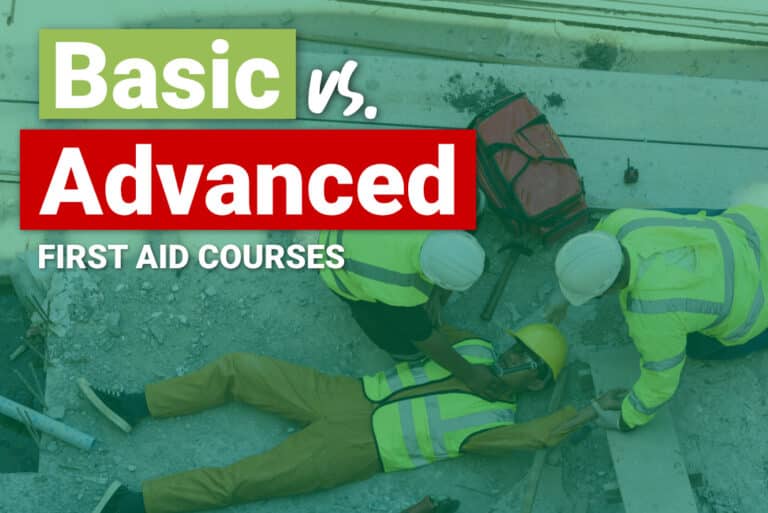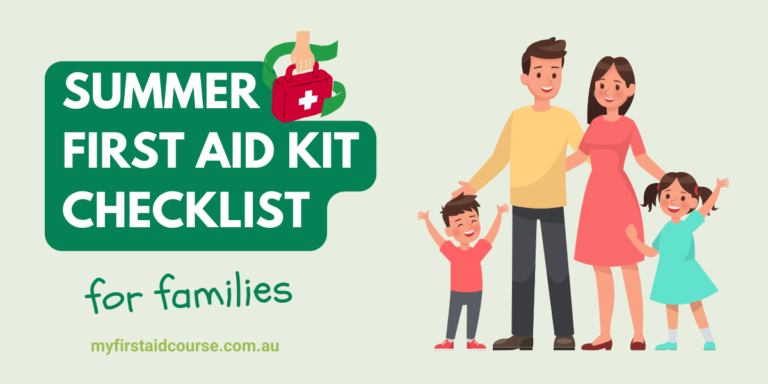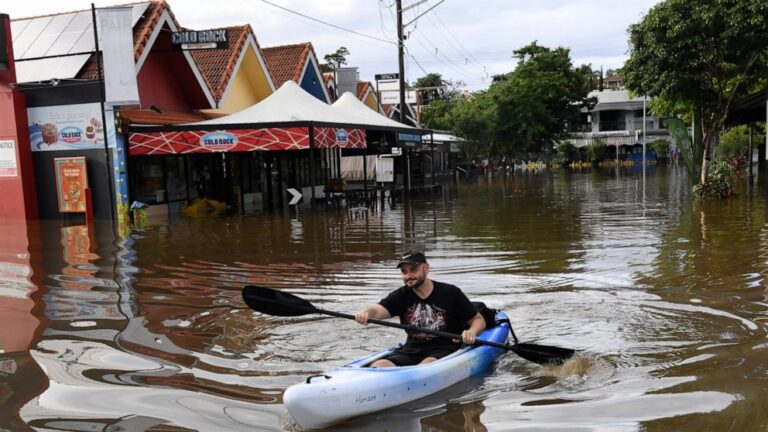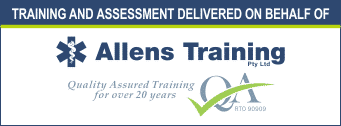With the increase in health emergencies in Brisbane, having a good understanding of first aid is essential. In this article, titled ‘First Aid Course Myths Debunked What Brisbane Residents Should Know,‘ we’ll help you to understand our city’s first aid courses without the misconceptions.
We’ll clarify some common questions we’re often asked about First Aid Courses. We will cover topics such as accessibility for Brisbane residents, provide precise details about certification validity, and explain the significance of staying up-to-date with advanced techniques that can save lives.
Additionally, you’ll receive comprehensive information about CPR with no misconceptions, only reliable facts that can significantly impact you.
We also discuss customized training options to cater to individual needs. Let’s delve into these misconceptions together!
Ready to become a life-saver? Visit My First Aid Course Brisbane to secure your spot online today!
Table Of Contents:
- Dispelling Common First Aid Training Misconceptions
- Unveiling the Truth About First Aid Certification Validity
- Updates and Advances in First Aid Techniques
- CPR Myths Versus Facts
- The Importance of Customized First Aid Training
- Overcoming Barriers to Learning First Aid in Brisbane
- Evaluating the Effectiveness of First Aid Training Programs
- Debunking First Aid Course Myths in Brisbane
Dispelling Common First Aid Training Misconceptions
We frequently come across exaggerated stories about first aid training. But don’t worry; we’re here to separate the facts from fiction and ensure you understand what’s involved in learning life-saving skills in Brisbane.
 The Reality of First Aid Course Accessibility in Brisbane
The Reality of First Aid Course Accessibility in Brisbane
Some people believe that first aid courses take up too much time and are in inconvenient locations. That’s just not true.
My First Aid Course Brisbane makes these essential skills available for everyone, whether you’re busy or have time.
Gone are the days when schedules and locations were barriers.
Today, our first aid courses are quicker and more flexible than ever. With our express option you won’t need to spend a day, or days in a classroom. You can complete a 3-5 hour online segment at home and then come in for a 2 hour 15 minute practical session. So with just a short amount of time you can undertake Hltaid011 Provide First Aid.
First Aid Training is Too Complex for the Average Person
Some might think first aid training is overly complicated and unsuitable for those without a safety or medical background.
This idea is far from reality. Modern first aid courses are designed to be accessible and easy to understand, even for the average person.
You don’t need to be a medical expert to learn first aid skills like CPR, identifying strokes and stopping bleeding.
First aid training is structured to make these techniques straightforward and applicable in real-life situations. You’ll learn valuable skills that can save lives.
You Only Need First Aid Training for Serious Injuries
There’s a misconception that first aid training is only necessary for dealing with severe injuries or life-threatening situations.
However, for more minor issues of day-to-day life, knowing first aid is really valuable!
When your family member or coworker sprains their ankle, knowing some basics can ease their pain and make them more comfortable.
Knowing procedures for a burns injury can stop something minor from becoming worse than it should by doing the wrong thing.
Also, big emergencies in life often take us by surprise. So rather than being unprepared, learning how to assess and provide assistance in emergency situations is essential for ensuring the well-being of yourself and those around you.
First aid training equips you with the knowledge to respond effectively in minor and major incidents.
Unveiling the Truth About First Aid Certification Validity
Let’s set things straight about first aid certifications in Brisbane. It’s recommended by industry to keep your first aid knowledge up to date. Knowledge does not last indefinitely.
Hltaid011 Provide First Aid is recommended to be renewed every 36 months, however, Hltaid009 Provide cardiopulmonary resuscitation is recommended to be renewed every 12 months. These will ensure you keep your skills and knowledge current.
When booking a course, make sure it will actually provide you with the skills you need. A key is to look for nationally recognised courses, what matters most is the accreditation behind your certification.
Make sure you check if the course meets Australian standards-ASQA.
The Legitimacy of Online Certifications
Some individuals look for online first aid certification. There are many benefits to online learning: it’s convenient and can be cost effective.However a number of online first aid certifications are not nationally recognised. That could mean a lot of time, for a certificate that’s not recognised by your employer.
What counts is choosing providers who offer comprehensive recognised courses, so you can learn those life-saving skills properly.
In-Person Training Benefits
Let’s discuss the benefits of face-to-face training now. Practicing with a manikin gives trainees real-time feedback on technique, something not easily replicated through a screen alone.
This doesn’t mean chucking out online learning, though.Our express courses allow you to learn the theory online in the comfort of your home, and then give you hands-on time without having to be in a classroom all day.
Updates and Advances in First Aid Techniques
The days when the Heimlich maneuver was the primary solution for choking are in the past. Similar to advancements in tech gadgets, first aid techniques also receive modern updates.
Keeping up to date with these changes isn’t just a wise decision; it can potentially save lives.Consider a few changes: The acronym for saving a life now has some extra steps. Instead of ABC, it’s now DRSABCD.
The rise of technology has also brought us life saving apps like Emergency+, which helps pinpoint your exact location when calling Triple Zero (000).
Rather than checking for pulse, updated first aid guidelines encourage a simple “look, listen and feel” test to see if a patient is breathing.Let’s look at a few more changes:
Evolution of Anaphylaxis Management and Burn Care
Anaphylaxis management has undergone several adjustments.
Hands-on training with Adrenaline Auto-Injectors like EpiPens is now included in HLTAID011 Provide First Aid. Rather than just being something in more advanced first aid courses, it’s been seen that there is a clear need for as many people as possible to know how to help when someone has a severe allergic reaction.When it comes to burns, including remedies like butter and ice, is not recommended.
The recommended approaches for first-degree burns up to third-degree burns are the following.
For first-degree burns:
- Cool the burn under cool (not cold) running water for at least 20 minutes. Avoid using ice or icy water, as this can cause more damage.
- Cover the burn with a clean, non-stick dressing or plastic wrap.
For second and third-degree burns:
- Dial emergency services immediately.
- Make sure the person is safe from further burns or injury.
- Do not remove any clothing stuck to the burn.
- If possible, cool the burn under cool (not cold) running water for at least 20 minutes
- Wait for emergency services to arrive.
CPR Myths Versus Facts
A stack of myths about Cardiopulmonary Resuscitation (CPR) must be sorted out in Brisbane.
A common misconception is that CPR rescue breaths don’t matter anymore. While it’s true that just using your hands and giving chest compressions can really help, national guidelines encourage breaths, and they are still practiced in our courses.
Here’s an important point: some individuals believe they might face legal consequences if they make a mistake while attempting CPR to save someone. They say that if you do a first aid course, you can face more liability because you know more.
That is not true at all. Good Samaritan laws protect life-savers like yourself when acting in good faith during emergencies.
So don’t hold back; your actions could mean the difference between life and death.
It’s not uncommon for people to express concerns about potentially causing harm by breaking ribs during CPR. However, let’s debunk this misconception as well.
Sure, it can happen despite best efforts, but it’s far better than doing nothing. If someone has had a cardiac arrest and you don’t give CPR, they’ll die. It’s far better to push a little too hard and break some ribs than not push hard enough and the CPR not do its job.
As for the misconception about needing special certifications to perform CPR, let’s address that too.
You don’t require formal certification to act immediately when someone needs emergency services. However, undergoing training provides you with confidence and knowledge, enhancing the effectiveness and certainty of your response.
The Beat Goes On
Above all else, remember this: regular refreshers are essential because techniques update over time, as research tells us there are more ways to improve outcomes after cardiac arrests occur – meaning what was taught five years ago may look different now. Make sure to refresh your Hltaid009 Provide cardiopulmonary resuscitation every 12 months, and Hltaid011 Provide First Aid every 36 months.
The Importance of Customized First Aid Training
Believing that first aid training is a ‘one-size-fits-all’? Think again: practical first aid training can be tailored to individual needs and specific situations.
Let me explain why this flexibility is essential. Workplaces across Brisbane are diverse, ranging from bustling cafes to high-rise construction sites.
The risks at each location vary significantly, so My First Aid Course Brisbane come to you to deliver training and we customize courses for specific work environments. We understand that someone working in a cafe faces different hazards than someone on scaffolding. In our courses we spend more time on the injuries your workers will actually face.
For example, learning how to manage snake bites might be crucial for park rangers but may not be relevant during your Queen St office.
Below are some first aid courses that you can take depending on which you need to learn:
- Provide First Aid Course (HLTAID011 Provide First Aid) is a comprehensive first aid course that includes CPR, wound management, and other crucial first aid skills.
- Childcare First Aid Course Brisbane (HLTAID012 Provide First Aid in an Education and Care Setting) equips individuals working in educational and childcare settings with the knowledge and skills to respond to medical emergencies involving children and infants.
- Remote First Aid Course Brisbane (HLTAID013 Provide first aid in remote or isolated site) is specifically designed to prepare individuals to provide first aid in remote or isolated environments where professional medical assistance may be far away or delayed.
A Look at Tailoring Content for Varied Learning Styles
We all have different learning styles, even when acquiring life-saving skills.
Some individuals learn best through hands-on experience, while others require visual aids or engaging storytelling to vividly picture themselves in action.
Recognising this diversity, here at My First Aid Course Brisbane, we deliver content using various methods. This includes hands-on practice, as we understand that actively engaging with the material often leads to better retention.
We also incorporate clear visual aids, avoid boring PowerPoint presentations, and use engaging storytelling to ensure the lessons stick in your mind.
While standard protocols are the foundation of safety, applying them with insight allows us to be well-prepared without becoming overwhelmed by every possible scenario.
This practical approach focuses on real-life effectiveness without unnecessary fluff.
As new research emerges and feedback comes from those actively involved in saving lives, adjustments are made to ensure that training remains effective.
Key Takeaway:
Customized first aid training in Brisbane is key—it’s tailored to specific risks and learning styles, ensuring you’re ready for the unique emergencies of your environment.
Versatile teaching methods and ongoing updates make these courses practical, relatable, and up-to-date with the latest lifesaving techniques.
Overcoming Barriers to Learning First Aid in Brisbane
Busy Schedules Shouldn’t Be an Excuse
Many people in Brisbane believe they’re too busy for first aid training, but it’s like saying you’re too busy to learn how to save a life. The truth is, fitting a course into your schedule can be more manageable than you might think.
 Affordable First Aid Training Options in Brisbane
Affordable First Aid Training Options in Brisbane
My First Aid Course Brisbane offers flexible sessions that accommodate even the busiest lifestyles.
Concerns about the cost of first aid courses often arise, but what value can we place on being prepared to help our friends or loved ones in an emergency?
HLTAID011 Provide First Aid is just $115 but the knowledge on how to stop a choke, spot a stroke, use a defibrillator and give CPR is invaluable!
Building Confidence Through Hands-On Practice
Some individuals worry about their confidence levels even after training, fearing they wouldn’t know what to do in a real emergency.
However, with hands-on practice and real-life simulations provided during first aid courses, students leave feeling prepared and capable.
Knowing CPR isn’t just about meeting compliance requirements; it’s about having confidence and knowledge.
Managing Stress Responses: Part of First Aid Training
We’ve all heard someone say, “I’m not good under pressure.”
The good news is that part of learning first aid includes managing stress responses and ensuring that in an actual emergency, panic doesn’t take hold – preparation does.
We also impart knowledge on taking advantage of resources that can help us to cope with any emotional stress from emergencies.
Ensuring Accessibility for All Learners in Brisbane
Lastly, accessibility is crucial for those with disabilities or special needs.
Rest assured, quality trainers across Brisbane’s providers, like My First Aid Course Brisbane, make every effort to ensure everyone who wishes to learn has an equal opportunity through tailored delivery methods where necessary.
While these barriers may appear challenging at first glance, discussing your needs with us on 07 3872 6777 can open the door to us making reasonable adjustments for you.
Key Takeaway:
Think you’re too busy for first aid training in Brisbane? Think again. Flexible courses fit around your life, and they don’t cost the earth. Hands-on practice boosts your confidence, while stress management techniques prepare you for real emergencies. And don’t worry about accessibility—quality trainers ensure everyone gets a fair go.
Evaluating the Effectiveness of First Aid Training Programs
We know that not all training is great training. It’s a common myth that all first aid providers are the same.
It’s essential to understand that it’s not just about obtaining a fancy certificate to hang on your wall.
The true value lies in how confident a course leaves you. You’ll want to have grown your knowledge and abilities.
What are some things that make a difference in course quality?
Instructor Qualifications
Let’s start with instructor qualifications.
First aid instructors must possess practical knowledge and experience to impart knowledge effectively to their students.
We ensure our trainers have up to date current experience and competency.
There’s no reason to settle for anything less than top-notch trainers when learning life-saving skills.
Course Content
Quality courses should cover a comprehensive range of skills, from managing snake bites to confidently addressing heart attacks without breaking into a cold sweat.
We offer nationally recognised courses and allow hands-on practice because there’s a difference between reading about CPR and performing it.
Practical Assessments
A proper assessment gives trainees the confidence to know they’ve mastered essential skills under the supervision of an instructor before facing real-life emergencies. It’s not about giving everyone a free pass.
If we see something that could improve in your first aid, we’ll tell you and help you work on those skills.
Key Takeaway:
Don’t be fooled by first aid course myths. Look for quality trainers with hands-on experience, courses that tackle serious emergencies head-on, and practical assessments to prove your skills.
Debunking First Aid Course Myths in Brisbane
So, you’ve tackled the tall tales head-on. You know now that first aid courses are for accessible in Brisbane – easy to get into and tailored just for your needs.
It’s clear that keeping up-to-date with training is not a ‘nice-to-have’ but a must-do. You’ve seen that keeping up to date with first aid is essential to help you save a life.
Every course should have practical skills checks, excellent trainers, and content that keeps pace with the latest lifesaving techniques.
“First Aid Course Myths Debunked What Brisbane Residents Should Know” has set things straight.
Use this knowledge to empower yourself, take action, stay informed, and become valuable to Brisbane’s life-saving community. If today was about busting myths wide open, tomorrow is about applying what you’ve learned to make a tangible difference.
Ready to learn life-saving skills and become prepared for emergencies?
Don’t delay this vital training. Book your course now at My First Aid Course Brisbane, or call 07 3872 6777 to learn more!

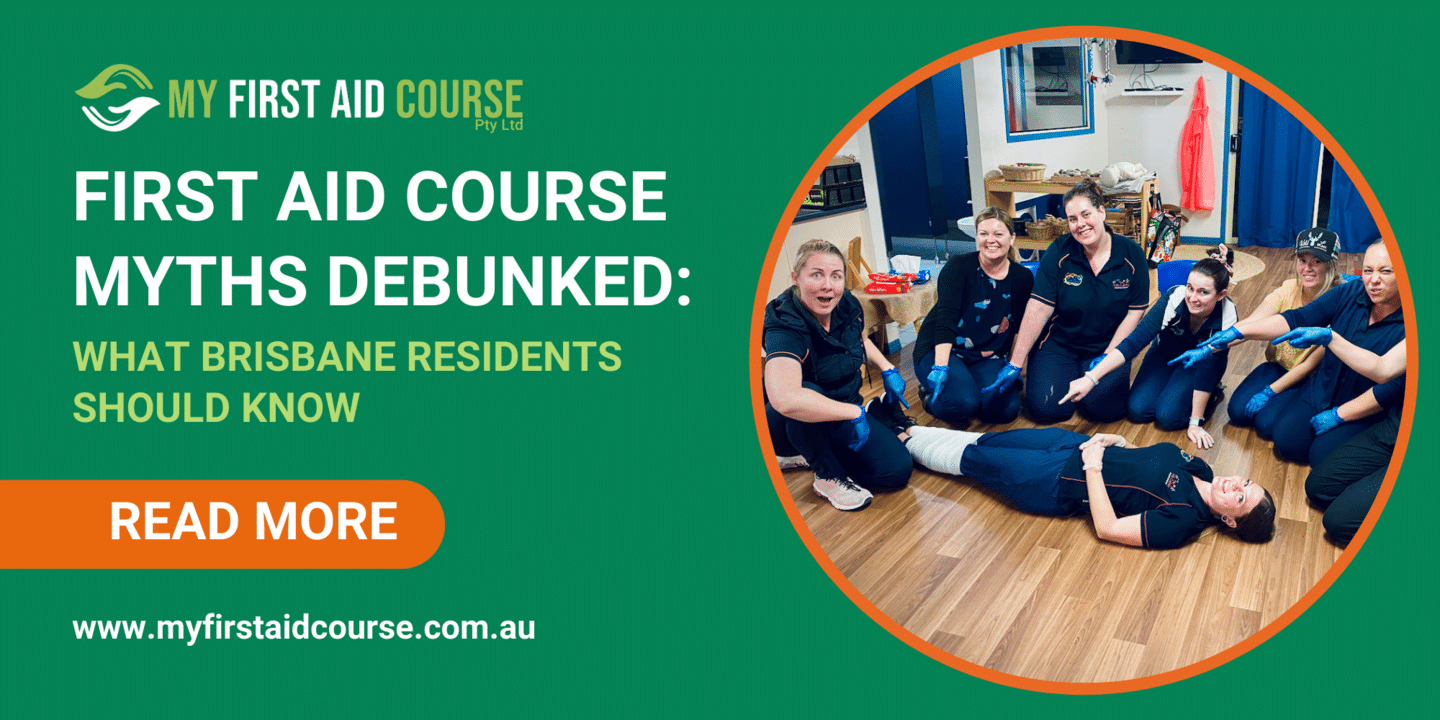
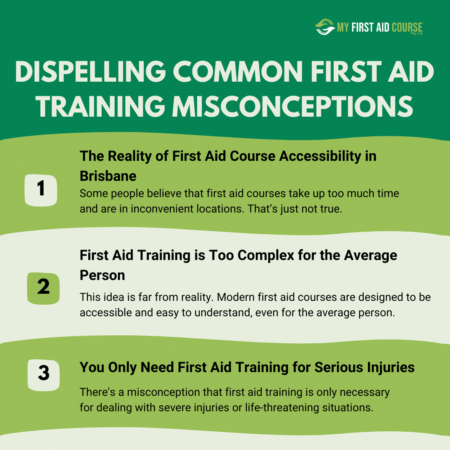 The Reality of First Aid Course Accessibility in Brisbane
The Reality of First Aid Course Accessibility in Brisbane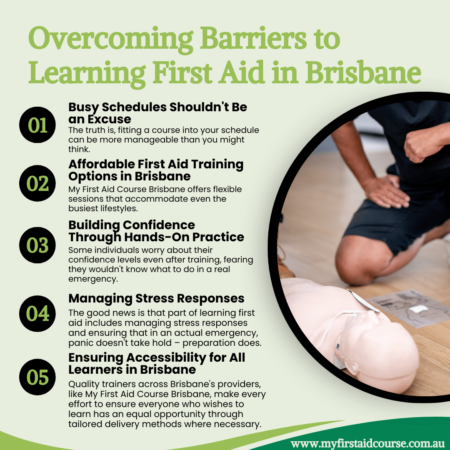 Affordable First Aid Training Options in Brisbane
Affordable First Aid Training Options in Brisbane
